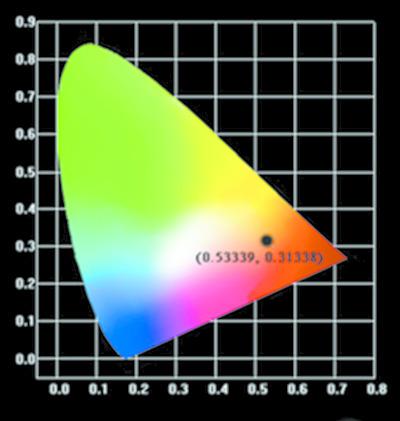当前位置:
X-MOL 学术
›
Acta Cryst. C
›
论文详情
Our official English website, www.x-mol.net, welcomes your feedback! (Note: you will need to create a separate account there.)
A new family of lanthanide coordination polymers based on 3,3'-[(5-carboxylato-1,3-phenylene)bis(oxy)]dibenzoate: synthesis, crystal structures and magnetic and luminescence properties.
Acta Crystallographica Section C ( IF 0.8 ) Pub Date : 2020-07-21 , DOI: 10.1107/s2053229620009547 Dong Dong Yang 1 , Li Ping Lu 1 , Miao Li Zhu 1
Acta Crystallographica Section C ( IF 0.8 ) Pub Date : 2020-07-21 , DOI: 10.1107/s2053229620009547 Dong Dong Yang 1 , Li Ping Lu 1 , Miao Li Zhu 1
Affiliation

|
Six two‐dimensional (2D) coordination polymers (CPs), namely, poly[{μ5‐3,3‐[(5‐carboxylato‐1,3‐phenylene)bis(oxy)]dibenzoato‐κ6O1:O1′:O3,O3′:O5:O5′}bis(N,N‐dimethylformamide‐κO)lanthanide(III)], [Ln(C21H11O8)(C3H7NO)2]n, with lanthanide/Ln = cerium/Ce for CP1, praseodymium/Pr for CP2, neodymium/Nd for CP3, samarium/Sm for CP4, europium/Eu for CP5 and gadolinium/Gd for CP6, have been prepared by solvothermal methods using the ligand 3,3′‐[(5‐carboxy‐1,3‐phenylene)bis(oxy)]dibenzoic acid (H3cpboda) in the presence of Ln(NO3)3. The complexes were characterized by single‐crystal X‐ray and powder diffraction, IR spectroscopy, elemental analysis and thermogravimetric analysis (TGA). All the structures of this family of lanthanide CPs are isomorphous with the triclinic space group P and reveal that they have the same 2D network based on binuclear LnIII units, which are further extended via interlayer C—H…π interactions into a three‐dimensional supramolecular structure. The carboxylate groups of the cpboda3− ligands link adjacent LnIII ions and form binuclear [Ln2(RCOO)4] secondary building units (SBUs), in which each binuclear LnIII SBU contains four carboxylate groups from different cpboda3− ligands. Moreover, with the increase of the rare‐earth Ln atomic radius, the dihedral angles between the aromatic rings gradually increase. Magnetically, CP6 shows weak antiferromagnetic coupling between the GdIII ions. The solid‐state luminescence properties of CP2, CP5 and CP6 were examined at ambient temperature and CP5 exhibits characteristic red emission bands derived from the Eu3+ ion (CIE 0.53, 0.31), with luminescence quantum yields of 22%. Therefore, CP5 should be regarded as a potential optical material.
and reveal that they have the same 2D network based on binuclear LnIII units, which are further extended via interlayer C—H…π interactions into a three‐dimensional supramolecular structure. The carboxylate groups of the cpboda3− ligands link adjacent LnIII ions and form binuclear [Ln2(RCOO)4] secondary building units (SBUs), in which each binuclear LnIII SBU contains four carboxylate groups from different cpboda3− ligands. Moreover, with the increase of the rare‐earth Ln atomic radius, the dihedral angles between the aromatic rings gradually increase. Magnetically, CP6 shows weak antiferromagnetic coupling between the GdIII ions. The solid‐state luminescence properties of CP2, CP5 and CP6 were examined at ambient temperature and CP5 exhibits characteristic red emission bands derived from the Eu3+ ion (CIE 0.53, 0.31), with luminescence quantum yields of 22%. Therefore, CP5 should be regarded as a potential optical material.
中文翻译:

基于3,3'-[(5-羧基-1,3-亚苯基)双(氧基)]二苯甲酸酯的镧系配位聚合物的新家族:合成,晶体结构以及磁性和发光性质。
六二维(2D)配位聚合物(CPS),即,聚[{μ 5 -3,3 - [(5-羧酸根基-1,3-亚苯基)双(氧基)] dibenzoato-κ 6 ø 1:Ò 1' :ø 3,ø 3' :ø 5:ø 5' }双(ñ,ñ二甲基甲酰胺-κ ø)的镧系元素(III)],[LN(C 21 ħ 11 ö 8)(C 3 H ^ 7 NO )2 ] n,对于CP1,镧系元素/ Ln =铈/ Ce,对于镧系元素,/ PrCP2,钕/ ND为CP3,钐/ SM为CP4,铕/铕为CP5和钆/钆为CP6,已经使用该配体制备了溶剂热方法3,3' - [(5-羧基-1,3- Ln(NO 3)3存在下,亚苯基)双(氧基)]二苯甲酸(H 3 cpboda)。通过单晶X射线和粉末衍射,红外光谱,元素分析和热重分析(TGA)对复合物进行表征。该镧系元素CP的所有结构与三斜空间群P同构,并表明它们具有基于双核Ln III的相同2D网络。 通过层间CH-π相互作用进一步扩展为三维超分子结构。cpboda 3-配体的羧基连接相邻的Ln III离子并形成双核[Ln 2(R COO)4 ]二级结构单元(SBU ),其中每个双核Ln III SBU包含四个来自不同cpboda 3-配体的羧酸酯基。此外,随着稀土Ln原子半径的增加,芳环之间的二面角逐渐增大。磁性上,CP6在Gd III之间显示弱的反铁磁耦合离子。在环境温度下检查了CP2,CP5和CP6的固态发光特性,CP5表现出源自Eu 3+离子的特征性红色发射带(CIE 0.53,0.31),发光量子产率为22%。因此,CP5应该被视为潜在的光学材料。
通过层间CH-π相互作用进一步扩展为三维超分子结构。cpboda 3-配体的羧基连接相邻的Ln III离子并形成双核[Ln 2(R COO)4 ]二级结构单元(SBU ),其中每个双核Ln III SBU包含四个来自不同cpboda 3-配体的羧酸酯基。此外,随着稀土Ln原子半径的增加,芳环之间的二面角逐渐增大。磁性上,CP6在Gd III之间显示弱的反铁磁耦合离子。在环境温度下检查了CP2,CP5和CP6的固态发光特性,CP5表现出源自Eu 3+离子的特征性红色发射带(CIE 0.53,0.31),发光量子产率为22%。因此,CP5应该被视为潜在的光学材料。
更新日期:2020-07-21
 and reveal that they have the same 2D network based on binuclear LnIII units, which are further extended via interlayer C—H…π interactions into a three‐dimensional supramolecular structure. The carboxylate groups of the cpboda3− ligands link adjacent LnIII ions and form binuclear [Ln2(RCOO)4] secondary building units (SBUs), in which each binuclear LnIII SBU contains four carboxylate groups from different cpboda3− ligands. Moreover, with the increase of the rare‐earth Ln atomic radius, the dihedral angles between the aromatic rings gradually increase. Magnetically, CP6 shows weak antiferromagnetic coupling between the GdIII ions. The solid‐state luminescence properties of CP2, CP5 and CP6 were examined at ambient temperature and CP5 exhibits characteristic red emission bands derived from the Eu3+ ion (CIE 0.53, 0.31), with luminescence quantum yields of 22%. Therefore, CP5 should be regarded as a potential optical material.
and reveal that they have the same 2D network based on binuclear LnIII units, which are further extended via interlayer C—H…π interactions into a three‐dimensional supramolecular structure. The carboxylate groups of the cpboda3− ligands link adjacent LnIII ions and form binuclear [Ln2(RCOO)4] secondary building units (SBUs), in which each binuclear LnIII SBU contains four carboxylate groups from different cpboda3− ligands. Moreover, with the increase of the rare‐earth Ln atomic radius, the dihedral angles between the aromatic rings gradually increase. Magnetically, CP6 shows weak antiferromagnetic coupling between the GdIII ions. The solid‐state luminescence properties of CP2, CP5 and CP6 were examined at ambient temperature and CP5 exhibits characteristic red emission bands derived from the Eu3+ ion (CIE 0.53, 0.31), with luminescence quantum yields of 22%. Therefore, CP5 should be regarded as a potential optical material.
中文翻译:

基于3,3'-[(5-羧基-1,3-亚苯基)双(氧基)]二苯甲酸酯的镧系配位聚合物的新家族:合成,晶体结构以及磁性和发光性质。
六二维(2D)配位聚合物(CPS),即,聚[{μ 5 -3,3 - [(5-羧酸根基-1,3-亚苯基)双(氧基)] dibenzoato-κ 6 ø 1:Ò 1' :ø 3,ø 3' :ø 5:ø 5' }双(ñ,ñ二甲基甲酰胺-κ ø)的镧系元素(III)],[LN(C 21 ħ 11 ö 8)(C 3 H ^ 7 NO )2 ] n,对于CP1,镧系元素/ Ln =铈/ Ce,对于镧系元素,/ PrCP2,钕/ ND为CP3,钐/ SM为CP4,铕/铕为CP5和钆/钆为CP6,已经使用该配体制备了溶剂热方法3,3' - [(5-羧基-1,3- Ln(NO 3)3存在下,亚苯基)双(氧基)]二苯甲酸(H 3 cpboda)。通过单晶X射线和粉末衍射,红外光谱,元素分析和热重分析(TGA)对复合物进行表征。该镧系元素CP的所有结构与三斜空间群P同构,并表明它们具有基于双核Ln III的相同2D网络。
 通过层间CH-π相互作用进一步扩展为三维超分子结构。cpboda 3-配体的羧基连接相邻的Ln III离子并形成双核[Ln 2(R COO)4 ]二级结构单元(SBU ),其中每个双核Ln III SBU包含四个来自不同cpboda 3-配体的羧酸酯基。此外,随着稀土Ln原子半径的增加,芳环之间的二面角逐渐增大。磁性上,CP6在Gd III之间显示弱的反铁磁耦合离子。在环境温度下检查了CP2,CP5和CP6的固态发光特性,CP5表现出源自Eu 3+离子的特征性红色发射带(CIE 0.53,0.31),发光量子产率为22%。因此,CP5应该被视为潜在的光学材料。
通过层间CH-π相互作用进一步扩展为三维超分子结构。cpboda 3-配体的羧基连接相邻的Ln III离子并形成双核[Ln 2(R COO)4 ]二级结构单元(SBU ),其中每个双核Ln III SBU包含四个来自不同cpboda 3-配体的羧酸酯基。此外,随着稀土Ln原子半径的增加,芳环之间的二面角逐渐增大。磁性上,CP6在Gd III之间显示弱的反铁磁耦合离子。在环境温度下检查了CP2,CP5和CP6的固态发光特性,CP5表现出源自Eu 3+离子的特征性红色发射带(CIE 0.53,0.31),发光量子产率为22%。因此,CP5应该被视为潜在的光学材料。


























 京公网安备 11010802027423号
京公网安备 11010802027423号